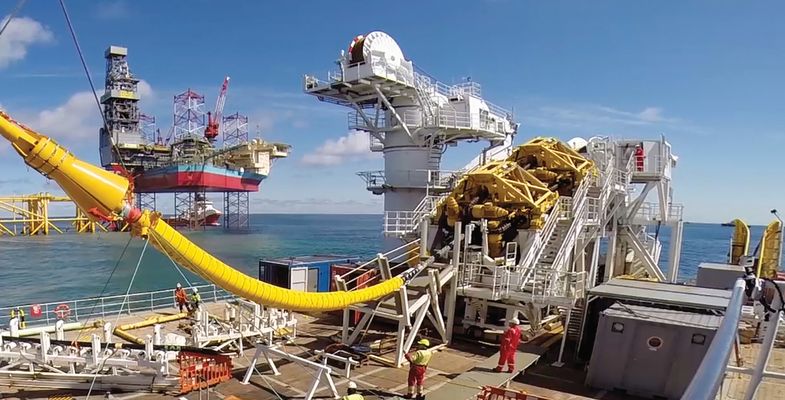IEC 60529 IP Protection Testing of Subsea Cable Joints
The International Electrotechnical Commission (IEC) 60529 standard is widely recognized for its importance in ensuring the protection ratings of electrical enclosures and subcomponents, including subsea cable joints. This standard defines the environmental protection provided by a product's housing, typically indicated by an IP rating format such as IP67 or IP68.
Offshore platforms and their associated subsea infrastructure are exposed to some of the harshest environments on Earth, where water ingress can lead to critical failures. Ensuring that subsea cable joints meet the required IP protection level is crucial for maintaining operational integrity under these conditions. The IEC 60529 standard provides a structured approach to assessing and certifying this protection.
The testing process involves subjecting the subsea cable joint to various environmental stress factors, including immersion in water, dust ingress, salt spray, and temperature cycling. The goal is to verify that the joint maintains its integrity under these conditions without compromising performance or reliability. This testing ensures compliance with international standards and supports the safety and longevity of offshore infrastructure.
Our laboratory specializes in performing IEC 60529 IP protection tests on subsea cable joints, providing a comprehensive service for quality managers, compliance officers, and R&D engineers involved in the design and manufacture of such critical components. By adhering to this standard, manufacturers can ensure their products meet the stringent requirements necessary for safe deployment in offshore environments.
The testing procedure involves several key steps:
- Preparation of the subsea cable joint specimen according to the specific IP rating required.
- Immersion tests to evaluate water resistance at various depths and durations as specified by the desired IP code.
- Dust ingress tests to determine the effectiveness of the joint's dust protection.
- Salt spray testing to assess corrosion resistance under marine conditions.
- Thermal shock testing to ensure stability across a range of temperature variations.
Upon completion, we provide detailed reports that outline all test parameters and results. These reports are essential for compliance documentation and can be used in tender documents or as part of quality assurance protocols.





